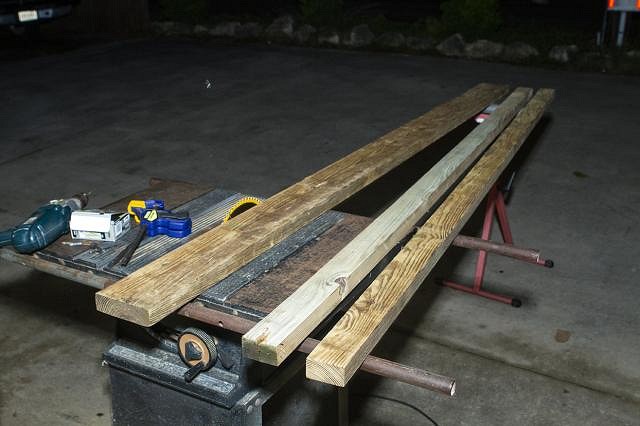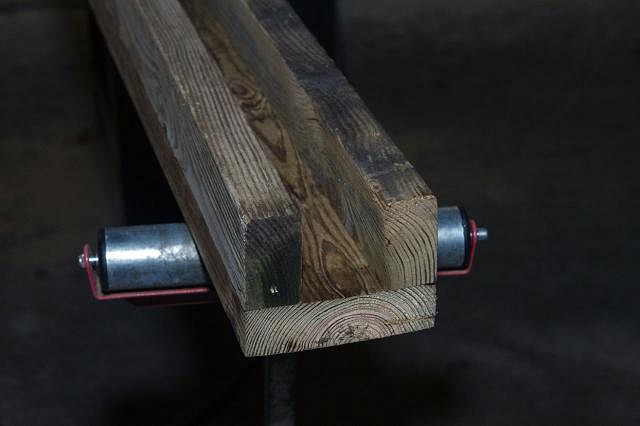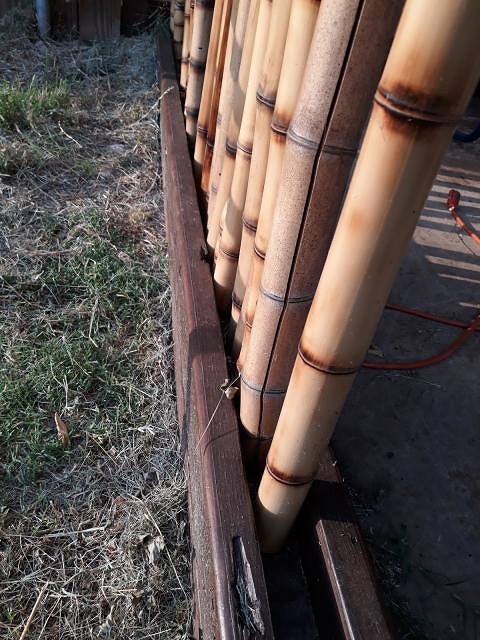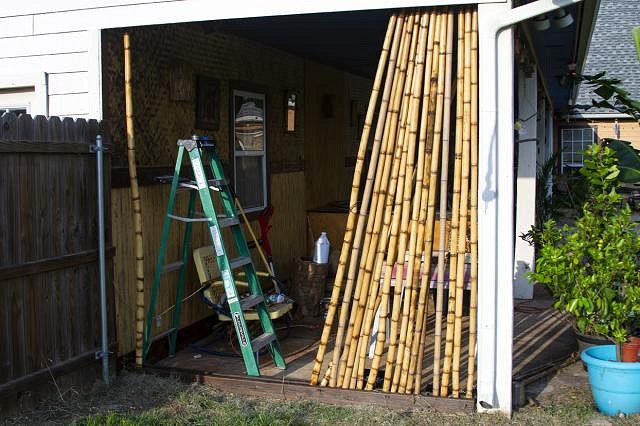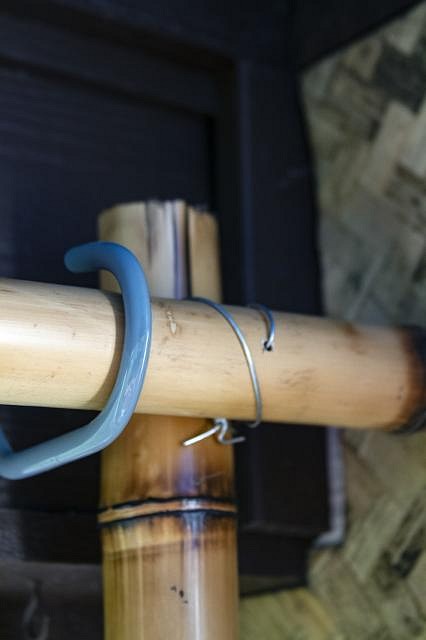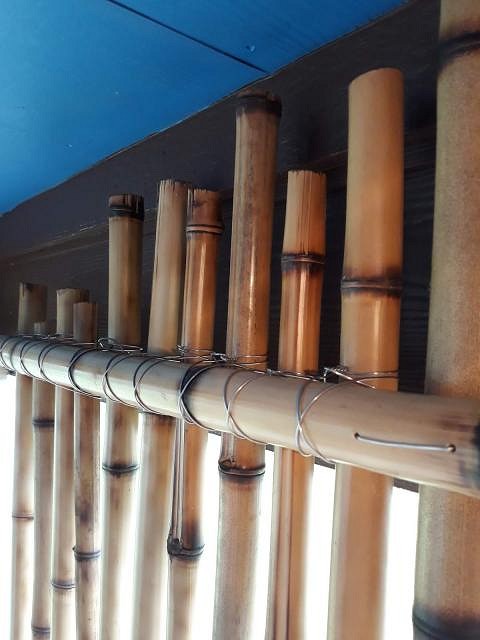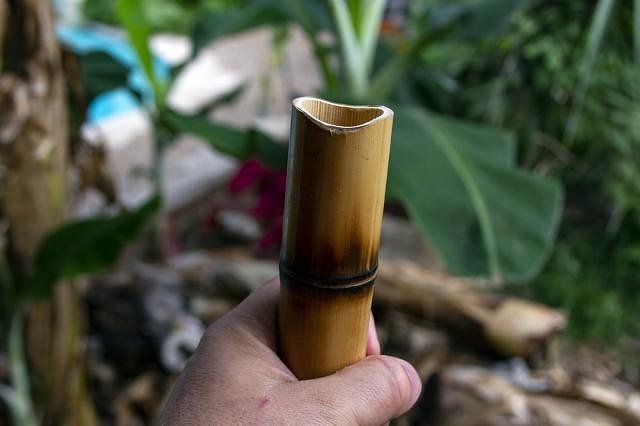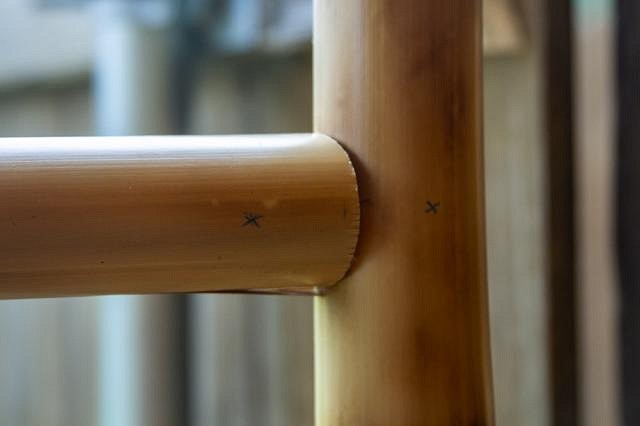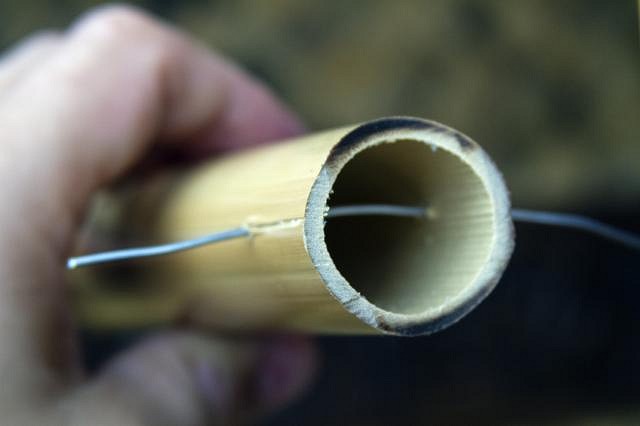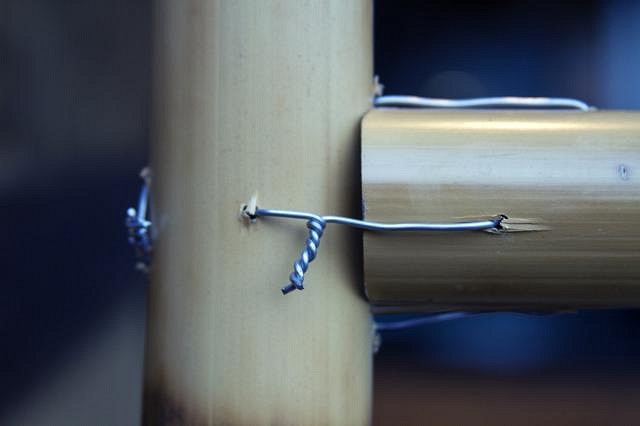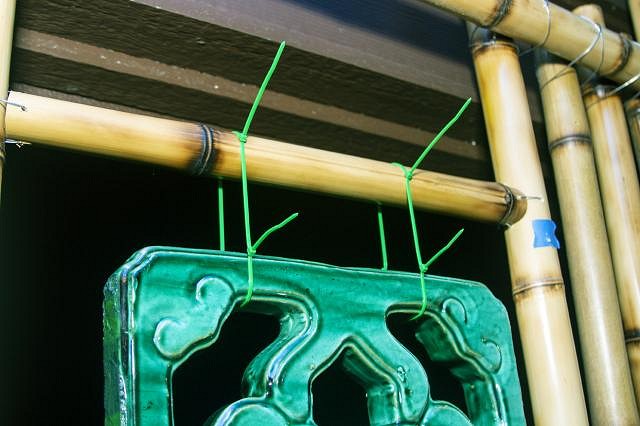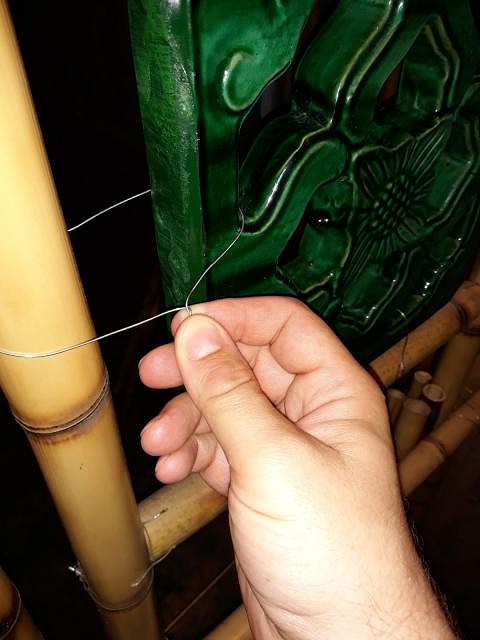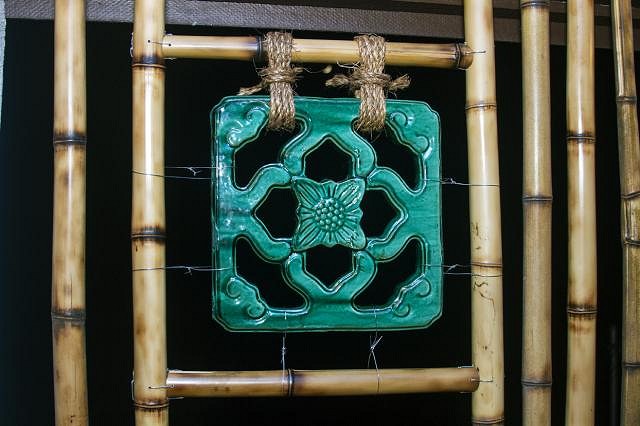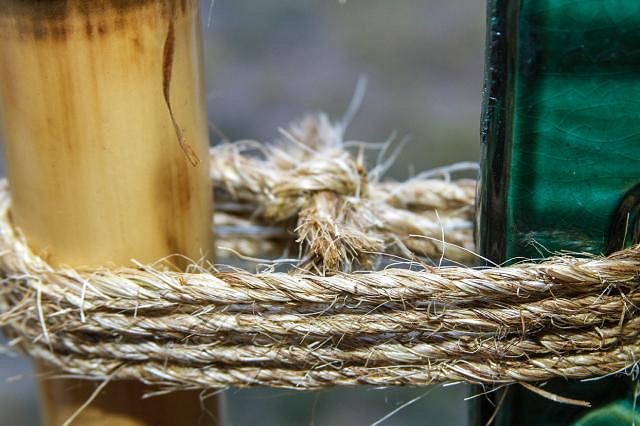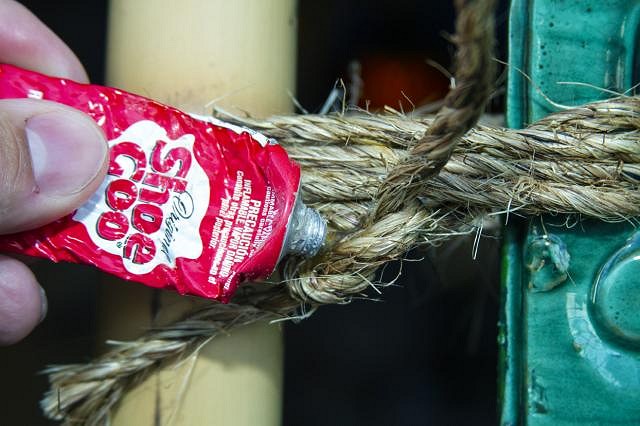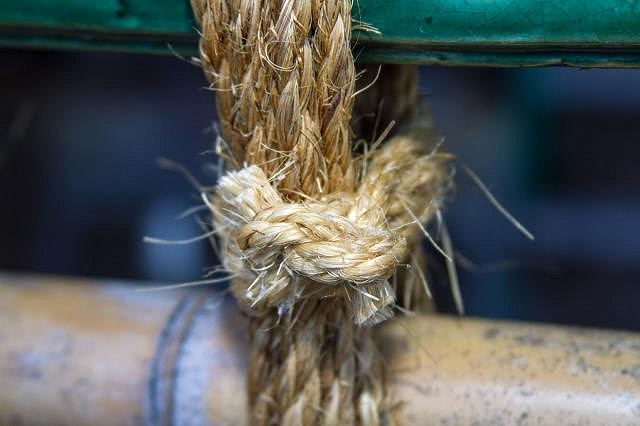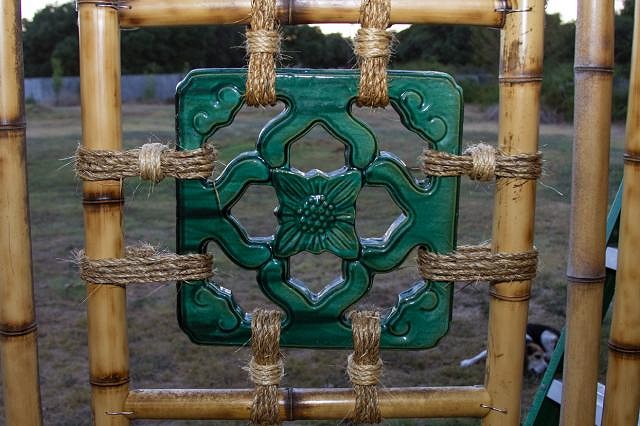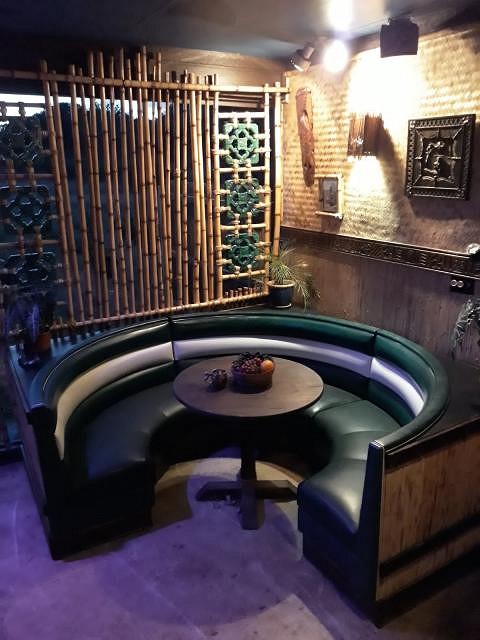Tiki Central / Home Tiki Bars / Lagoon of Mystery
Post #798143 by Prikli Pear on Fri, Oct 18, 2019 12:36 PM
|
PP

Prikli Pear
Posted
posted
on
Fri, Oct 18, 2019 12:36 PM
Hey! Look! It's a build update! When you look at these images, realize this particular part of my build started a year ago. Literally. My progress on any particular project is low, moving forward in fits and starts, but when one stumps me I shift to another and back again. Eventually I finish, but it's tedious along the way. This part began last October, and actually earlier if you count my efforts at harvesting bamboo. I always intended to have a bamboo screen marking the far end of the covered patio that is the Lagoon of Mystery, and when I lucked into the booth from Fuddrucker's, that prompted me to start to get serious about finishing off that end. I took some of the wood salvaged from my deck rebuild and cut two boards to length, then split one lengthwise:
I attached the split pieces to the larger one with outdoor wood screws to form a U. I stained and weather treated the assembled piece, and added furniture footers underneath to separate the wood from direct contact with the concrete of the patio to avoid moisture wicking and reduce the potential for rot. The wood's western red cedar, which resists rot, but even with weather proofing, continuous wet can ruin any wood.
The bamboo culms I'd harvested and torched slotted into position. The culms average maybe 2" or less in diameter, 8'-8'6" in length.
This is what it looked like from the outside. Not a whole lot of anything, beyond a mess.
I used a bicycle hanging hook up top to support an 8' bamboo cross beam, then drilled and wired a vertical culm to it. I repeated this on the opposite side as well.
I quickly realized drilling the remaining culms would be overkill (not to mention time consuming) so I opted just to wire them in place. The wire's galvanized, rated to hold 20 pounds. Basically the cheap fencing wire you can get from any hardware store.
Next, I cut some cross pieces to length, and used my belt sander to grind out a concave depression in each end.
I marked drill holes through which I'd wire the cross pieces to the vertical culm.
Here's the tie wire running through the cross piece.
Here are the bamboo culms wired together. I used two wires on each side to double the strength. I still wouldn't recommend trying to use this as a ladder, though.
Now, to install the jade Chinese breezeway tiles! Did I mention I had tiles? No? Well, no tiki bar is complete without them, or somesuch nonsense. This is another reason it took me a long while to finish this--tiles are expensive. I got mine from those folks in Florida who've posted here on occasion. With shipping (these tiles are heavy) I could only afford to get a pair every few months, once extra cash became available. I used zip ties to hold the tile in place as I wired it securely.
I ended up using three wires through each of the openings on top to secure the tile, with a single wire through each remaining opening for the sides and bottom. I tried looping the wires around the bamboo and tiles, and cris-crossing them, but in the end just a straight, circular loop and twist at the end proved most effective. The wire's just there to hold the tikes secure. No need to overthink it.
Here's a tile wired up, with my first stab at rope wraps added.
Despite all the photos online of jade tiles tied up to bamboo grids, all you see is the front, which is designed to be the most aesthetically pleasing. For the life of me, I could find no reference anywhere to how these ropes are actually tied, what knots are used, etc. What followed was several days of me trying to figure out how to make this work and not look terrible. I tried several variations--some quite clever, if I do say so myself--but nothing that rose above "Good in theory, terrible in practice." I eventually settled on a basic square knot on the inside of the initial wrap. I tried to wrap the rope around the bamboo and tile four times before tying it off. I used Manila rope for this, for it's superior water tolerance.
To secure the square knots so they wouldn't work loose, I applied Shoe Goo to each knot. It's a strong glue similar to rubber cement. It oozed into crack and is relatively waterproof, so it seemed like a good choice. I have no idea how it will hold up to the elements, but I guess I'll find out sooner or later.
I did a secondary wrap of the Manila rope with sisal rope, because the cross-wrap is a common decorative detail seen with jade tiles. I also found it tightened up any slack in the Manila rope. Unfortunately, there was not room inside the ropes to tie it off in the interior, so my ties were exterior. I located the knots (again, square) on the out-facing side and applied Shoe Goo again. Once it dried, I used tin snips to cut off any excess rope. Why did I use sisal? To be honest, it's because I ran out of quarter inch Manila and the sisal was handy (and cheaper). In retrospect, the lighter color of the sisal makes for a nice contrast with the Manila, but I didn't notice that until after.
Here's a jade tile tied (mostly) in place. I've since coated the rope with Flood CFW UV, a weather protectant that's normally used on fences. It should help the rope survive exposure to the elements (at least, that's my hope). While the rope is holding the tiles securely, I want to point out that the rope's main role is decorative, covering up the wire underneath that's doing the real work.
Here's the bamboo screen and jade tiles in place with the booth adjacent. I need a mask or shield or some other element to go in the center of that screen. I also plan to build a floating deck to elevate the booth and get it off of the concrete, and also to serve as a transition (tiki bars are all about transitions, right). I'm happy with the final product, as the screen is very close to what I envisioned. At night, it effectively separates the booth area from the outside world, while allowing plenty of airflow. Alas, there's very little roof overhang on that side of the house, and rains in recent days have shown that area is not protected at all. I need to build a thatch awning to guard against rain and hail and other hazards from the sky, something I hadn't originally planned on. But I say the space dictates the build, and that's what's happening here.
As always, more detailed build-along notes (and more photos) are available on my blog. Edit: Wow! Just learned Mark Sellers bought a metric crap-ton of these same tiles for his Grand Rapids tiki palace, and that they originated with a mansion in Shanghai. So now I can say I have the same tiles as Max's South Seas Hideaway! ~Jayme Lagoon of Mystery [ Edited by: Prikli Pear 2019-10-18 13:19 ] |

